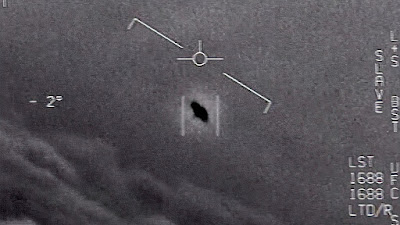Back in 1850, Italian paleontologist Giuseppe Meneghini found a peculiar fossil in the early Cambrian rocks of Sardinia. It had a very distinctive appearance -- a set of what appeared to be tubes arranged in a network of perfect hexagons, regular as a honeycomb -- and Meneghini named it Paleodictyon, which means "early net."
The problem was, no one could quite figure out what it was. There was speculation that it was the skeleton of a sea sponge, that it was some kind of filter-feeding trap laid down by peculiar giant single-celled organisms called xenophyophores, or that it was the tunnel network of some burrowing creature like a tube worm. None of these hypotheses had much in the way of direct evidence in their favor, and all had significant arguments against.
Then Paleodictyon was found in Devonian rocks. Then Carboniferous rocks. Then Triassic rocks. Always in sedimentary strata associated with deep marine environments -- and never with the slightest evidence of who might have created it.
So it went into the catalogues as a "trace fossil" -- a remnant of some unidentified organism. This didn't mean the paleontologists were giving up, however; the origins of other trace fossils have been solved, most notably the incredibly common conodonts, small, spiky fossils found in oceanic sedimentary rocks up through the Triassic Period, and which were finally determined to be the teeth of primitive fish a little like today's lampreys.
But Paleodictyon proved more difficult, despite the fact that pretty much everywhere -- and everywhen -- you look in deep-ocean sedimentary rocks, you find it. Here's a specimen from the Miocene Epoch:
Then a survey of the seafloor near volcanic vents on the Mid-Atlantic Ridge -- in very recent sediments -- came across a series of regularly-spaced holes. Curious, the oceanographers studying the area devised what amounted to a giant water gun to blow away the sediment and see what was beneath the mud, and hopefully, what might be creating the holes.
And underneath...
... was Paleodictyon.
Here, though, there was an additional clue; at each of the nodes in the network was a small upward-facing tube. It was the openings of the tubes, poking above the sediment, that had attracted the attention of the scientists. Naturally, they took samples (not to mention a closer look) to see what was in there.
Nothing was.
Detailed DNA analysis was performed on the samples, looking for anything that might give a clue as to what had made the network. All three of the most commonly-held hypotheses -- sponges, xenophyophores, and tube worms -- came up negative. There were traces of DNA present, but all of it seemed to be from bacteria and protists living in the tubes, not the creature that made the tubes.
To cut to the punch line: we still have no idea what Paleodictyon is, or who made it.
But whatever it is has been around for a very, very long time -- at least 540 million years -- substantially unchanged. It's true that there are lots of things in nature exhibiting hexagonal tiling; it's the simplest way to tile a two-dimensional surface, and is seen in everything from quartz crystals to the symmetrical cooling cracks in the Giant's Causeway in Ireland. But the fact that this trace fossil is only found in deep-sea sedimentary rocks is certainly suggestive that its origin is biological.
In the end, we're left with a mystery, and are honestly no closer to figuring Paleodictyon out now than we were when Giuseppe Meneghini first discovered it over 170 years ago. So we'll continue looking -- and trying to determine the origin of one of the most persistent and widespread fossils ever found.
****************************************





.jpg)


